A walk around the MIT campus is like an architectural tour. A number of world-famous architects, from Eero Saarinen over I.M. Pei to Frank O. Gehry created some outstanding buildings for this renowned university.
MIT
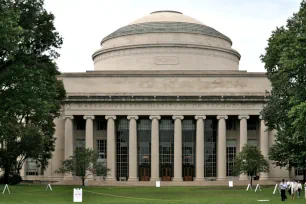
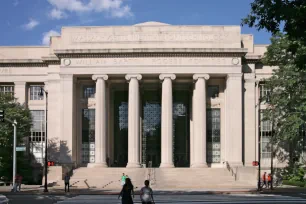
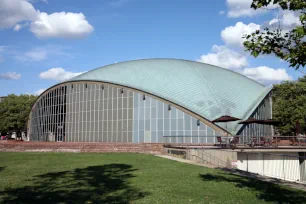
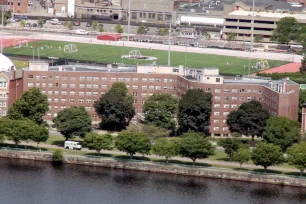
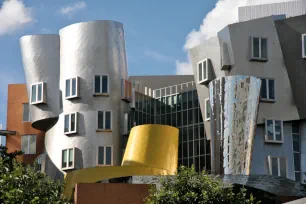
The Massachusetts Institute of Technology is one of the world’s leading universities in engineering and science and one of two internationally prominent universities in Cambridge (the other being Harvard).
The institute was chartered in Boston in 1861 and moved to its current site along the Charles River Basin in 1916. The campus is 168 acres or almost 70 hectare large and contains a surprising number of architecturally interesting buildings.
Buildings
MIT’s most emblematic building is the Maclaurin building, a Neoclassical limestone structure with a Pantheon-like dome. The building, which is part of a complex that also includes the Rogers Building, was designed by William Welles Bosworth – an MIT graduate – and constructed between 1913 and 1916. The 1937 Rogers Building is similar in style to the Maclaurin Building, with an Ionic portico and an identical but smaller dome.
Across Massachusetts Avenue from the Rogers Building is the Kresge Chapel, a small brick building set in a moat. A modern sculpture sits on top of the cylindrical building. The plain, windowless structure was designed in 1955 by the Finnish architect Eero Saarinen. The same architect is also responsible for the nearby Kresge Auditorium, built between 1953 and 1955. The fascinating triangular structure has a tent-like roof and glass walls that rise from a circular brick platform.
Another Finnish architect, Alvar Aalto, designed the nearby undulating brick building along the bank of the Charles River as a dormitory. Its peculiar shape allowed the architect to give each room a clear view of the river. The building was created between 1947 and 1949 and marked a departure from the prevalent classical style of the campus buildings.
One of the few high rises on the MIT campus is the Green Building, designed by the renowned American architect I.M. Pei and built between 1962 and 1964. The 21-story tower is a focal point of the campus and looms over the mostly low rise buildings.
Plenty of other noteworthy buildings dot the campus, but easily the most eye-catching is the Stata Center, a modern and seemingly chaotic building with twisting and curving facades. The colorful but controversial complex was created in 2004 by the Pritzker prize winning architect Frank O. Gehry.
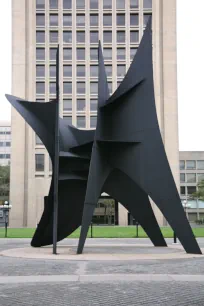
Sculptures
A number of modern sculptures have been installed across the MIT campus. On a plaza in front of the Green Building stands Alexander Calder’s La Grande Voile (Big Sail), a large modern sculpture in black steel. “Three-Piece Reclining Figure, Draped”, a sculpture group created in 1976 by the famous English sculptor Henry Moore, was installed at the Killian Court – in front of the Maclaurin Building. Another modern sculpture at the campus is Picasso’s “Figure Découpée”, created in 1963. It is located at the east end of the MIT campus, near the Hermann Building.
Several other sculptures can be found on the campus from artists such as Jacques Lipschitz, Louise Nevelson and Dimitri Hadzi, who created the bronze sculpture known as Elmo/MIT.
MIT Museum
The MIT campus is home to the MIT Museum, located at 265 Massachusetts Avenue, where you can find exhibitions that showcase the technology and scientific projects that made MIT a world leader in science and technology. Other branches of the museum – such as the Hart Nautical Collections – are only open to researchers.
- Next: Long Wharf
- More Sights & Attractions in Boston

